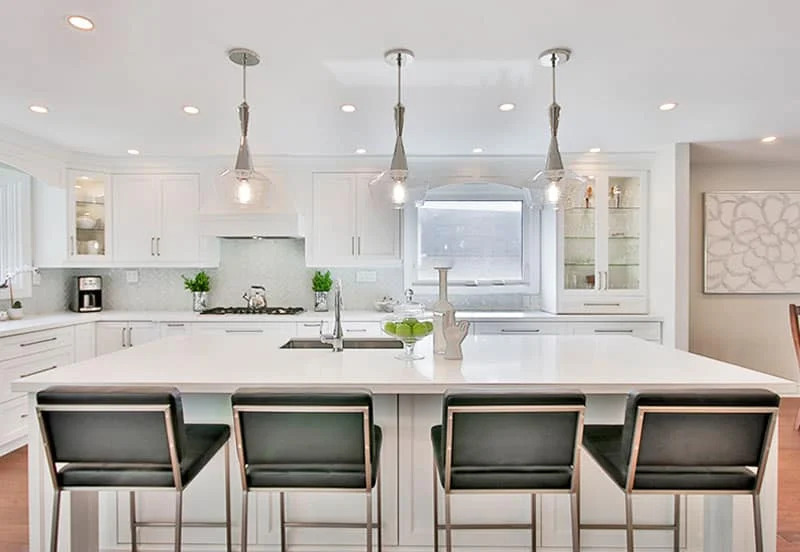The kitchen island has become a central focal point in modern kitchen designs, and an increasingly popular feature is the inclusion of a sink in the island. This innovative design choice offers both functional advantages and aesthetic appeal, but it also comes with its set of considerations. In this article, we will explore the pros and cons of having a sink in the kitchen island to help homeowners make informed decisions about their kitchen layout.
Pros:
- Enhanced Workflow: Placing a sink in the kitchen island can improve the overall workflow by creating a central and easily accessible location for various kitchen tasks. This can be especially beneficial for multitasking during food preparation, allowing individuals to chop vegetables, rinse ingredients, and wash dishes without moving back and forth between different areas of the kitchen.
- Open and Social Kitchen Design: Having a sink in the island promotes an open and social kitchen layout. The person at the sink can engage in conversations with family members or guests in the surrounding areas, making the kitchen a more inclusive and interactive space. This design is well-suited for those who enjoy entertaining while cooking.
- Maximized Counter Space: Including a sink in the island frees up counter space along the perimeter of the kitchen. This additional countertop real estate can be utilized for various purposes, such as meal preparation, setting up a buffet for serving, or even creating a dedicated space for small kitchen appliances.
- Aesthetic Appeal: A sink on the island can enhance the visual appeal of the kitchen. It creates a clean and streamlined look, especially. When paired with complementary design elements such as a stylish faucet, integrated cutting board, or coordinated materials. The island becomes a focal point, adding a touch of elegance to the overall kitchen design.
- Functional Zones: With a sink in the island, the kitchen can be divided into distinct functional zones. This separation of tasks allows for efficient use of space and facilitates collaborative cooking. For example, one person can focus on food preparation at the island while another takes care of cooking at the stove.
Cons:
- Plumbing Considerations: One of the primary challenges of installing a sink on the island is the need for plumbing. Creating proper plumbing infrastructure may involve significant construction work, including running water supply and drain lines to the island. This can increase the overall cost of the kitchen renovation or construction project.
- Limited Storage Options: The inclusion of a sink in the island may limit the availability of storage space beneath the sink. Traditional kitchen layouts often have cabinets or drawers underneath the sink. However, when placed in the island, accommodating these storage options becomes challenging. Homeowners may need to explore alternative storage solutions.
- Noise and Splashing: Having a sink on the island can lead to increased noise levels during dishwashing and other water-related activities. Additionally, splashing water may become more noticeable in an open kitchen design. Consideration should be given to incorporating noise-reducing features and ensuring proper drainage to minimize these potential downsides.
- Potential Clutter: The island can become a central hub for various activities, and having a sink in this space may lead to potential clutter. Dishes, utensils, and cleaning supplies may accumulate around the sink, affecting the visual cleanliness of the kitchen. Homeowners should be mindful of keeping the island organized.
- Design and Layout Constraints: The decision to place a sink on the island may be influenced by the kitchen’s overall design and layout. In some cases, the available space or structural constraints may limit the feasibility of incorporating a sink on the island. Homeowners should work closely with designers and contractors to ensure a seamless integration.
Conclusion:
While a sink in the kitchen island can offer enhanced functionality, aesthetic appeal, and a more social cooking experience. It comes with its share of considerations and challenges. The decision to include a sink on the island should be based on the specific needs, preferences, and constraints of the homeowner. By carefully weighing the pros and cons Individuals can make informed choices to create a kitchen design. That suits their lifestyle and enhances the overall functionality of the space.

